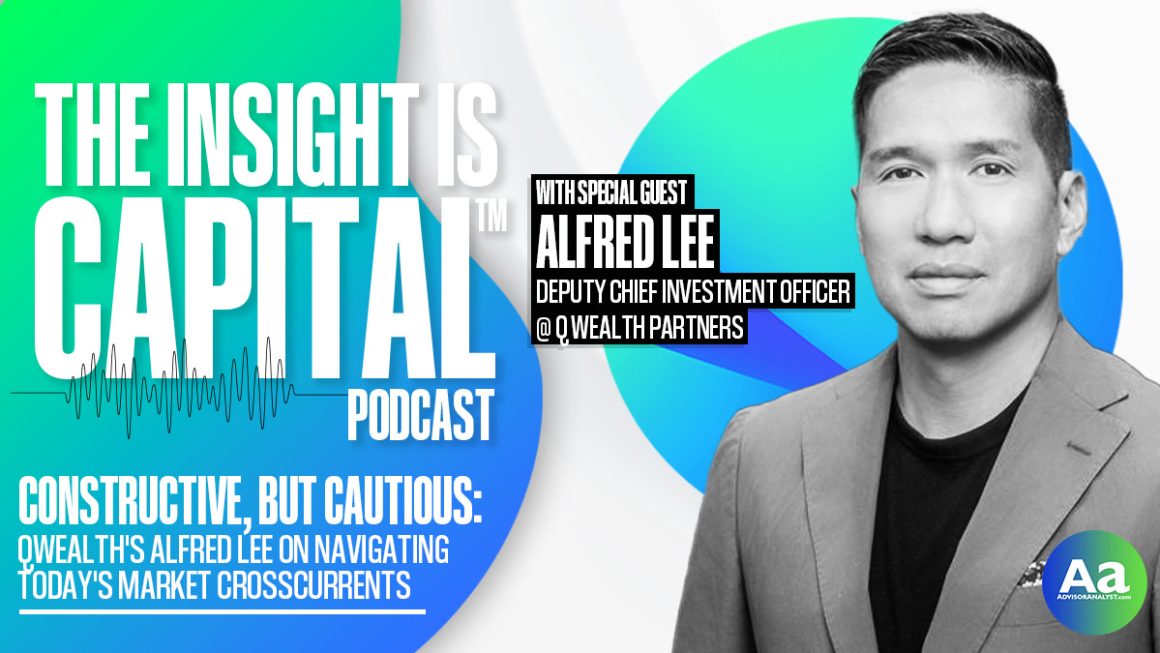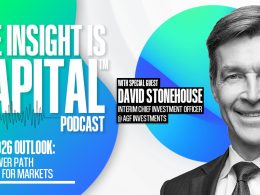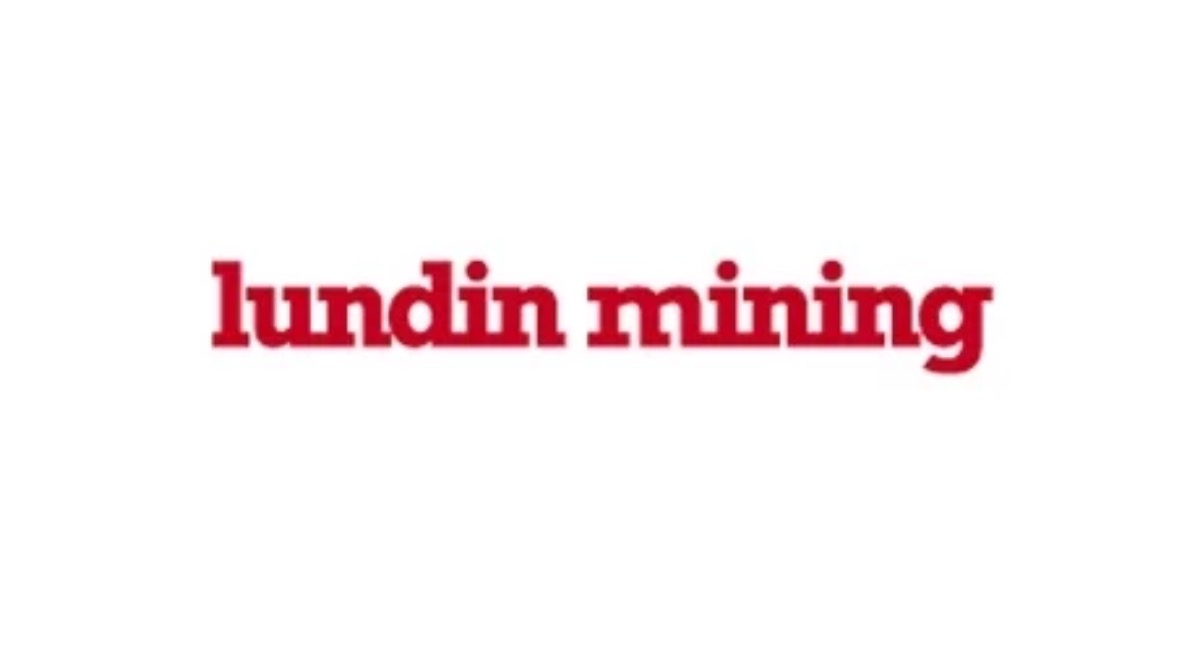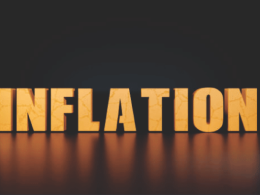Alfred Lee: [00:00:00] When you look at the US the overnight rate’s at four point a half percent, and you compare that to Canada, Canada’s at 2.75 E, CCB is at 2.15. Um, so there’s more room to cut, but I would argue that the us you know, in terms of their economic situation, it’s far more robust down there. G is at four point a half.
Um, inflation’s at CPIs at 2.7%. So it’s, it’s a different monetary policy for a different environment. Um, also. With just a lot of the uncertainty that’s coming up with the tariffs. Big, beautiful bill. If we do see inflation, then let’s say, you know, Powell goes ahead and cuts 50 to 75 basis points over the next six to nine months.
All of a sudden you see inflation creep up from 2.7 to 3.2% or something higher. Then that differential between your overnight rate and um, inflation is going, isn’t gonna be that significant anymore. For the Fed to kind of reverse course from cutting interest rates to hiking interest rates. I don’t think it’s a good look, [00:01:00] rather, um, because it destroys their credibility, but it also creates a, a massive shock to the system.
Pierre Daillie: Hello and welcome back. This is Insight Is Capital, and I’m your host Pierre Daillie. There’s a certain quiet authority that comes from building something from the ground up. Alfred Lee has done exactly that. Now, deputy Chief Investment Officer at Q Wealth Partners, Alfred brings more than two decades of market tested experience to the table before joining Q Wealth in 2024.
He spent 14 years at BMO Global Asset Management, where he helped launch and grow the BMO ETF platform from zero to over a hundred billion dollars in assets known for his deep technical knowledge and ability to translate complex strategies into practical solutions. Alfred’s fingerprints are on everything from fixed income and factor-based ETFs, to pandemic era bond [00:02:00] purchase programs in a field that prizes both innovation and execution. He’s built a career delivering both.
Announcer: This is Insight is Capital. Join us in our fireside chats with some of the most fascinating people in finance to discuss their insights on life markets, macro investment strategy, and much more.
Pierre Daillie: Alfred. Welcome. It is great to see you again and have you back.
Alfred Lee: Yeah, no, it’s been a while, but, uh, definitely looking forward to this and catching up.
Pierre Daillie: Likewise. Thank you. So, Alfred, before we get into your take on markets, uh, which I’m, I’m anticipating everybody wants to hear, uh, tell us about Q Wealth and your role there and what made it a compelling choice for you to join the firm.
Alfred Lee: Well, I’ll start off with just, you know, talking about what Q Wealth is. So, uh, you know, in the US there’s been this huge movement towards [00:03:00] independence. Um, this RAA movement, right? So registered investment advisors, where I think after 2008, um, a lot of advisors and portfolio managers have wanted to go independence.
So essentially moving away from a lot of the wirehouses, so the Citibank, the Goldmans, the JP Morgans. Um, as you know, in Canada, you know, the trends tend to lag the US by about 10 to 15 years. So that independence we haven’t really seen in Canada. Right. But now it’s starting to, to take that form. So we are starting to see that hockey stick in terms of advisors wanting to move away from banks and, and truly seeking independence at this point.
So, you know, our business is essentially the Canadian equivalent of an RAA aggregator, where we essentially provide, you know, turnkey solutions in terms of. The operations, the legal framework, the compliance, um, the technology stack, um, the marketing and, and most importantly the investment platform and the asset management as well.
Right? So, uh, we’ve been growing quite a bit. Um, I started September of last year, so just a little bit shy of my one year [00:04:00] anniversary right now. Right. So I started, it was 3.5 billion in assets. We’re at five and a half billion right now. Um, we’re probably gonna finish the year, calendar year, somewhere between 7 billion and, and 8 billion.
Um, our business development team’s been on just absolutely like busy. Um, they’ve been fielding a lot of inbound calls now where people are starting to inquire about, uh, Q Wealth at this point. Um, so it’s been, you know, we’re, we’re just about to hit that hockey stick in terms of growth. Um, so my job as the deputy CIO is essentially, um, working with our current CIO and and co-founder Larry Berman.
And creating the investment platform, right? So creating the asset management side of the business. So that’s everything from, uh, creating the foundation. So we spent the last, you know, 11 months, uh, creating the foundation so we could scale up, but also creating, you know, the solution shelf, um, creating, you know, what the value proposition is and, and articulating that to clients.
So first, first year was all about setting that [00:05:00] foundation. As we enter, you know, my second year now, it’s about getting that communication out and articulating what that value proposition is to the partners and, uh, prospective partners, but also in clients as well.
Pierre Daillie: Yeah. And by partners you mean advisors?
Yeah.
Alfred Lee: Yeah. So the, the structure of our, uh, business is essentially a partnership. So when they join Q Wealth, they become a partner. Um, so that’s why we call them partner firms rather than advisors.
Pierre Daillie: Yeah. So now, now that you’re part, now that now coming on board as as, uh, deputy CIO of Q Wealth, one of Canada’s leading independent advisor platforms, how has being in that environment shaped the way that you approach research and portfolio strategy?
Do you feel. Do you feel more freedom to challenge consensus or explore areas that might have been, uh, off limits or out of bounds in a traditional setup?
Alfred Lee: Uh, it’s a good question. I would say there, there’s more freedom in, in ways. Um, but you know, from [00:06:00] my, from my background before, I never really felt that I was told, um, to push one thing or, or not to talk about certain things.
I think, you know, the luxury that I had was. We essentially worked at a startup that was backed by the bank, which was Bmware ETFs or at, in the early stages. Um, so the good thing is that, you know, we built such an expansive, um, product set that as you know, you know, we, we had broad-based solutions, we had very targeted solutions.
Um, so we were always. We had products that essentially, you know, no matter which way the market went, there was always a conversation that we could have, and it was always an honest conversation. Um, the limitation however, is that, you know, when you look at the ETF industry or, or not the industry, but the ETF structure itself, it’s a great solution for the public markets.
And then, and I’m a huge advocate of ETFs, as you know, and I always will be. Um, so our, how our business is, is structured right now is that we offer private pools. So they’re non exchange traded. Maybe at one point we [00:07:00] will offer, um, ETFs at, at some point, but right now everything’s a private pool. So the beauty of that is, you know, we have everything, uh, from the public markets, uh, perspective, so, right.
You know, across that active risk spectrum, we have enhanced beta and we have factor-based solutions. We have active managers, um, but on the public or the non-public space or the private space, we have a private equity fund, a private debt fund, a liquid alts fund. A lot of these ton of exposures don’t work very well in the, in an ETF structure because, you know, when you look at private debt, for example, when I commit capital to a private debt manager, they have to put that capital to work and they don’t have to worry about redemptions in order to properly invest in the business.
Right? So I think in an ETF wrapper, it, it’s, it’s not exactly the best structure for, you know, the private space. So in ways. The Q Wealth kind of solution shelf is a lot more broad. I mean, we don’t have those targeted exposures like sectors, for example, but it is more broad [00:08:00] when you know, when it comes to having all the tools to build a proper portfolio.
Um, it is a lot more, um, expansive because it has the private, um, exposures.
Pierre Daillie: I was just thinking while you were, you know, talking about your, your experience and what’s interesting is that, you know, you, you really played an instrumental role in building what has become an agnostic platform. At your previous employer at at, at BMO, one of the advantages of your, of your career is that you, that you did play an instrumental role in, in, in bringing, you know, all possible options to market.
Not, not just. You know, one, one small suite of ETFs, but, but an entire comprehensive suite of ETFs that could address almost any, any challenge, diversification challenge, portfolio allocation challenge that, that arose. And, and so [00:09:00] now I think maybe, maybe what’s changed is that now, like in addition to the offerings that are, that are on the shelf at Q Wealth, including the private offerings that you just mentioned, you also, you are also.
In a position to comment and advocate for portfolio construction that encompasses all issuers, right? Yeah. Not just, you’re not, you’re no longer limited to, as a strategist. I mean, you’re no longer limited to discussing the, the comprehensive sweep of ETFs that you once had a role in, in building. Uh, now you have, you have the freedom to talk about all ETFs.
Absolutely. The entire, the entire market. So that’s probably the biggest change that’s taken place in, in your, in your ability to build strategies.
Alfred Lee: Absolutely. I mean, we, we do have an ETF fund for examples where we can invest in, um, essentially any ETF out there, right? So both Canadian listed and, um, US listed as well.
So [00:10:00] we’re, we’re definitely looking for more opportunities in, in terms of, you know, partnering with ET TL providers and partnering with other, um, platforms where we could launch, you know, more. ETF related strategies, but we also have internal pools as well, um, that could, you know, invest in right, in ETFs, but also if there’s not an ETF that provides that exposure.
We have private pools that, um, essentially are built around like private debt, private credit, for example. Uh, we have an alternative strategy that we partnered with, uh, a QR for example. Um, so there’s a lot more exposures that our partners have exposure to, whether it’s internally built or externally built.
Pierre Daillie: Alfred from your, I I think we may have discussed this first part of the question, but from, or I did. From, from your vantage point, what’s the biggest difference working within an independent platform like Q Wealth versus a legacy institution? Has it, has it changed the way you, has it changed what you prioritize in your work or even how you define [00:11:00] investment success?
Alfred Lee: It’s a good question. So I think, um, you know, if you look at my resume, for example, I, I essentially grew up in, in the banking community, right? Right. So having worked at, uh, three large Canadian banking institutions, I think, um, as I kind of alluded to before, I mean, one of the luxuries is that, you know, my last 14 years at BMO, uh, it was essentially an entrepreneur kind of culture, even though it was kind of, you know, backed by the bank, um, and, and known by the bank.
But it was a very entrepreneurial kind of, um. Startup feel, especially at the beginning. I think I got, uh, the luxury of working with very talented leaders that allowed us to do, uh, many different things. And also working with a very talented team that was, you know, responsible for building the entire, um, ETF business there as well.
Right. Um, but in terms of, you know, um, the differences between, you know, BMO and hair, I, I would say it’s very. Similar in, in many ways because you know, that that hustle in terms of, you know, the [00:12:00] ability to wear many different hats. I remember in the early days, you know, there’s, there’s five or six of us in one closet, and it’s like, who wants to do this?
And then people just put up their hands. Right? Um, yeah. But it’s, it’s almost the same kind of culture here where, um. If you have a defined role and something kind of falls outside your purview, you just roll up your sleeves and, and get it done. Right? Right. It’s very much about that household culture here, which, which I like.
Um, but in terms of, you know, how we define success, it’s, it’s very much the same thing. Right? So my philosophy and what really appealed to me at, at Two Wealth is, um, it’s always a client first, right? I think, you know, the philosophy is always, you know, do what’s right for the client. Look after the client and, and the rest will follow.
So it’s very much the same culture here. Um, I think a good thing is that Q Wealth is a registered portfolio manager, so we have the fiduciary responsibility in terms of, you know, creating the best portfolios and putting the right solutions in our client’s portfolios, whether it’s internally built or externally, [00:13:00] uh, managed or an external product.
Right. So, um, you know, even when we create our solutions, my philosophy is that. We have to earn those dollars. We can’t just put it into client’s portfolios, especially as a fiduciary. Um, you know, the way I view it is if we create a solution or a fund, we’re out there competing with the BlackRocks and the PIMCOs of the world where it has to be an equal solution, uh, from an investment perspective, if not better.
Um, cost competitive, if not better. Right. And also, you know, that storytelling or that communication to the end client in terms of. Talking about that value proposition, it has to be equally better as well.
Pierre Daillie: I, it is not hard to see, it’s not hard, hard to understand, like why Q Wealth, um, you know, brought you on board and you have, you have this incredible compounded knowledge of having, not only being there for, you know, the formation of, of your pa you know, in your, in your past, uh, career setup, but, [00:14:00] but.
Also having that entrepreneurial spirit and then now bringing it to Q Wealth where you have a whole new group of really incredible leaders to work with. Um, so, so I’m sure, uh, you know, they must be excited about what you’re bringing in, but, but. Equally, you must be very excited about what the future holds for, for, for your career.
Alfred Lee: It’s a fantastic opportunity because, you know, as you mentioned, um, as you know, you know, I’ve known you for probably over 10 years now, as we know. Very passionate about the markets, very passionate about portfolio management, investment strategy. But I’m equally passionate about business building and the.
You know, the, just the whole kind of getting the ability to build an asset management business, um, from the ground up. And this essentially was a blank canvas to work with. Um, and as you mentioned, you know, great leaders, great executive team, and, and great people here in great culture. So, um, it tick a lot of boxes.
Pierre Daillie: Yeah. Well, Alfred, we love the spirit of what you’re doing. It’s, it’s fantastic. [00:15:00] Uh, what Q Wealth is doing. Let’s talk about markets right now because the, the, you know, markets have been kind of dicey this year. Uh, at least it, it felt that way. You know, we had a lot of uncertainty. We still do. Um, you’ve described the current market setup as constructive, but not without its complexities.
Um. The sun is shining. I mean, you know, unexpectedly, I think even in the midst of all this uncertainty, uh, markets have continued to rally forward. Um, you know, most equity markets, the ones that matter to us the most, are at all time highs. Um, in your view, what may or what are investors getting wrong? What, what may they be getting wrong about this moment?
What risks do you think they’re not paying enough attention to heading into the second half of the year?
Alfred Lee: I, I think, you know, when you look at the market right now, I think you raised a good point, right? It just seems like it’s just shrugging everything off at this point. I think that’s partly due to, [00:16:00] um, when you look at all the different asset classes out there, um, especially in the public market, there is a lack of viable alternatives out there, right?
So, um, you look at bonds for example, um, there is inflationary concerns, especially, you know, on the long end of the curve, which, you know, yields continue to go up. So it’s not exactly you. You don’t exactly want to ration risk in your portfolio at this point. Right. And that’s coming from a former bond manager.
Intro Music: Yeah.
Alfred Lee: Um, but also, you know, when it comes to cash, you know, if you are thinking about like, you know, where overnight rates are, um, president Trump, you know, trying to put pressure on, uh, Powell in terms of cutting rates as well. So cash isn’t an alternative, uh, solution, neither, especially with inflationary pressure.
So it’s almost like equities is that. Default kind of answer at this point, especially if you only are looking at the public markets. Right? Um, but you know, we kind of headed into 2025 and, you know, we put a Outlook report, um, at the top of the year thinking that, [00:17:00] you know, the. Equity returns, let’s use the s and p 500 as as the benchmark.
Um, we were expecting, you know, high single digit to low double digit returns. And obviously when, um, uh, the liberation day hit we’re like, okay, maybe we got this wrong and maybe we’re gonna see, uh, negative returns. But, you know, after 2025 plus returns on the SP 500 in the last two years. The likelihood is that we’re not gonna see that again, right?
So, um, you know, we, we still kind of stand by that call. Um, we don’t really factor in calls when we create portfolios. Um, the way we create portfolios is, is almost like an institutional approach where, you know, we try to figure out what are we trying to deliver and what’s the most efficient way of, of delivering that, whether it’s 8% annualized returns or whether it’s tax efficient returns.
Um, and then we create portfolios that are resilient no matter what the markets do, right? But right. In terms of client communication, it’s, it’s important to, to, you know, tell clients [00:18:00] what markets are doing and, and have an expectation in terms of what to expect as well. So we anticipated, um, you know, again, you know, high single digit, low double, double digit returns, but there are risks in the markets like tariffs, valuations.
Geopolitical risk as well. So, um, those are the concerns that we have heading into the second half of the year.
Pierre Daillie: I think the key, you know, the, the one elusive idea that seems to be quite pervasive is, is, you know, is the idea of building a portfolio that’s prepared, you know, not, not taking a particular direction.
Of any kind, but prepared for all potential outcomes. Mm-hmm. And, and you know, having components within the portfolio that will provide. Resilience one way or another, no matter what happens. I mean, if the market continues to rally, then, then so be it. The equities continue their trajectory. [00:19:00] Um, on the other hand, if, if, you know, we have some event or, uh, you know, whether it’s economic or exogenous, that that affects the market or debasement concerns all these different concerns that are com compounding right now and seem to be getting, um.
Shrugged off as you said. Yeah. Are are are still there. They’re, they’re, they’re just like underneath that they’re, you know, there’s this strong undercurrent of uncertainty still underneath it all. And you know, the markets do climb a wall of worry they have this year. Um. Your outlook suggests we’re moving away from a market driven by momentum to one where fundamentals take the wheel, and you know, what, what, what does that shift mean for advisors on the ground and how should they be thinking differently about asset allocation right now?
Alfred Lee: Um, I, I think that’s, it’s, it’s more so to do within, um, certain asset classes, right? So within equities, for example, and, and you know, when you look at the sell off. We saw due to liberation day, [00:20:00] um, it was really driven by higher beta stocks, right? So it, it wasn’t unlike any kind of market sell off. It wasn’t that atypical.
Um, higher beta stocks tend to be more cyclical in nature and they tend to be more sensitive to, you know, what’s going on in the economy. So, obviously, you know, those led the. Sell off. Um, and then as we kind of recovered, um, since the beginning of April, it’s a high beta names that kind of outperformed, right, right.
So we, we actually dissected the s and p 500 into different beta buckets. And what you found was the higher beta stocks clearly outperformed since, since, uh, you know, the beginning of April. And, and those low volatility stocks that actually didn’t fall have been relatively flat since the recovery as well.
So, you know, when you look at. You know, these high beta stocks, you know, I don’t think that momentum can continue on forever. Right? So I think at some point we’re gonna have to rotate into kind of like higher quality stocks, uh, maybe to a touch of lower beta stocks as well. Right? [00:21:00] Um, you know, especially if we start seeing these inflationary pressures, right?
So if we start seeing big, beautiful bill. In terms of the fiscal policy, um, the inflation inflationary pressure kick in there, especially, um, in addition to the tariffs as well. Um, if you look at higher quality stocks, they tend to have more fiscally responsible balance sheets, um, more defendable business models as well that are gonna be more resilient in an in inflationary environment.
Um, so I think the, a lot of the rotation is, is more so to do with within the asset class. Um, from an asset allocation framework, right, we try to be very consistent in terms of, as you mentioned, spreading out exposures across different factors and, and different asset classes as well.
Pierre Daillie: Yeah, I think I, you know, the, the, the tough part of course with diversification, even like within each respective sleeve is, you know, for advisors, it, it typically is the discussion around, you know, [00:22:00] let’s.
Let’s rebalance away from the winning part of the portfolio. To some of the more attractively valued parts of the portfolio, or attractive in terms of quality or low volatility or dividend payers. You know, like making those adjustments is probably the biggest challenge advisors face. And of course, I mean taking, taking to some degree for granted the fact that, you know, clients have entrusted their advisors to make those decisions for them.
Um. It doesn’t, uh, it doesn’t go without notice if, if the allocation decisions were wrong six months or a year from now. Right? Yeah. Um, but, but I, I think one thing that I wanted to point out with regards to how you des, how you describe building portfolios, you know, one way, one way I sort of learned to.
Um, look at it, a perspective, uh, on, on portfolio construction was to start with the idea that you don’t know what’s going to happen mm-hmm. [00:23:00] At all. Mm-hmm. So you’re not building a portfolio based on, oh, you think interest rates or long-term yields are gonna continue rising. So, you know, let’s not, let’s, let’s not take a particular direction in, in fixed income or higher duration bonds or, or, uh, those types of assets, or, or you think that.
The mag seven’s gonna cont either it’s gonna continue to rally and continue to dominate. The AI story is gonna proliferate even further, and we’re gonna have this big rosy AI market. Um, but rather just, you know, what makes sense? What, what are the components of a resilient portfolio? What other assets besides equity and bonds, um, can provide that?
The smoothing, the diversification, even, even the, the counter volatility against, against those core assets, their traditional equity bond portfolio and, and that, that, that feels like the environment we’re in right now. And that, that, that feels like the time advisors should be really making the adjustments to [00:24:00] their portfolios is now not, you don’t, you don’t want to wish you had diversifiers in your portfolio after the market turns.
You know, potentially for the worse. You, you wanna do that ahead of time. Sure. But you don’t wanna do it, you don’t wanna do it just because you think that might happen. You want to do it in a constructive way where, where you do have that counterbalancing effect of, of assets that are uncorrelated, counter volatile, provide, provide that ballast that has been hard to define right now.
Uh, beyond bonds. Um, there are some. Positive economic events on the horizon, like the one big beautiful bill, uh, which is putting, you know, putting promises to put real money into the system, but at the same time, uh, to get into that fixed income question, inflation is still lurking in the, in the, in the wings, in the background.
How do you see the push pull dynamic? Which is really like a conundrum right now in terms of what advisors and investors should do, [00:25:00] um, between fiscal expansion and monetary caution playing out, especially for those fixed income investors or, or even those investors who are, you know, um, at the fringe or at the edge of that fixed income market.
Alfred Lee: Yeah, that. I mean, that fiscal expansion, I think, you know, as to your point, I think is gonna be stimulative for the economy. Uh, but on the flip side, it’s gonna add a lot of debt, right? So I think that was, uh, a lot of the pushback, um, even with I think some dissenting, uh, Republicans that voted against it as well.
Um, but I think that’s, you know, the balance that monetary policy has to play at this point. Um, and I think that’s why we’re getting a lot of friction between Trump and, and Powell at this point. Trump obviously wants to, you know, lower rates because he wants to refinance at a lower cost, but that’s gonna be inflationary, which is over time going to have to cause you to issue more debt.
So it’s gonna be, it’s gonna add to the debt base anyway, just in a, just in a different way. Right. Um, but you know, [00:26:00] just in terms of that push pull dynamic, we’re also seeing that push pull dynamic in, in the. Political spectrum as well, right? So Trump versus Powell. Um, but I think, you know, if I were to look at it, I actually think Powell was taking the correct stance here, right?
And the, the reason why I say that is because a lot of people are saying, well, you know, when you look at the US the overnight rates at 4.5% and you compare that to Canada, Canada’s at 2.75, ECB at 2.15. Um, so there’s more room to cut. But I would argue that the US. In terms of their economic situation, it’s far more robust down there.
GP is at four and a half. Um, inflation’s at CPIs at 2.7%. So it’s, it’s a different monetary policy for a different environment. Um, also, you know, with just a lot of the uncertainty that’s coming up with the tariffs, big, beautiful bill. If we do see inflation, then let’s say, you know, Powell goes ahead and cuts.
50 to 75 basis points over the next six to nine months.
Pierre Daillie: Yeah.
Alfred Lee: Then all of a, [00:27:00] see, all of a sudden you see inflation creep up from 2.7 to 3.2% or something higher. Then that differential between your overnight rate and um, inflation is gonna, isn’t gonna be that significant anymore. And then for the Fed to kind of reverse course from cutting interest rates to hiking interest rates.
I don’t think it’s a bad look because I, I don’t think it’s a good look, rather, um, because it destroys their credibility, but it also creates a, a massive shock to the system. So, um, I think Powell’s actually, you know, playing it right here. Um, you know, I know a lot of people are talking about stagflation, and when it comes to stagflation, there’s two things that address, right.
There’s the stake, which is taken in the economy and the inflation. And it’s like if you have to combat either, I mean, you, you have to choose to fight inflation first because. There’s only that many policy tools, tools to, to address it. And once it gets outta hand, it, it, it’s hard to, to fight as we saw, you know, in 2020 and, yeah, 2022, right?
So, um, I think you, you [00:28:00] address the inflation first, and then you stimulate the economy. So I, I think he’s doing the right thing here.
Pierre Daillie: So slow down the horse. Yeah, exactly. Not the cart. Don’t, don’t upset the apple cart. Just slow the cart. Slow down the horse first. Yeah. Right before, before they, you know, they had for that, that stagflation collision.
Um. Interesting. Very interesting. I, I, I, you know, there’s been, there’s been recently, I’m sure you’ve seen it, there’s been a lot of discussion about, you know, the, the, around this topic of fiscal dominance, over monetary dominance and, you know, it, it, it’s, it’s probably early, but, but politically it looks like that’s what the Trump administration is, is, is trying to muscle.
You know, their way into, into the mon, into the fed or into fed policy by, by saying, by, you know, countering with this fiscal dominance argument, which is that, which is that, you know, we need you to make it easier for us. Mm-hmm. [00:29:00] And it’s not the other way around. No. And, and, and that, that, maybe that’s early, but, but that seems to be.
That sentiment seems to be playing globally into this anti tariff sentiment, which is like, ha, you know?
Intro Music: Yeah.
Pierre Daillie: You know, like, let’s see what happens if you do the, if you go forward with these tariffs and you actually lock these things down and, and some of the deals that have been made trade wise have been kind of, you know, that’s a good deal.
Intro Music: Yeah. Um.
Pierre Daillie: I, I, I almost feel like, you know, like I, everyone, I, I wanna move on from this topic, but I almost feel like, you know, the other leaders around the, you know, in the global economy are looking at, at all this policy brinkmanship and, and, and tariff attack as something that will, that is sure. That could fizzle out potentially next year with the midterms.
With, you know, power [00:30:00] in the White House dissipating a little bit if there’s, uh, a change in the house, in the Senate. Yeah. Um, but even if you look beyond that, if you go to the end of the term, you know, we’ve got another three years left of, of, of, uh, the Trump term, right? And, and halfway into that is the next presidential election.
And what’s the backlash, what’s the political sentiment going to be at that point? Given all of these policy changes that that could. Be done away with very quickly. By another administration. By the next administration. Yeah. What, you know, whoever that is, it doesn’t necessarily follow that Trumpism will dominate the White House for the next eight to 12 years and we, and these, these changes that have taken place.
So, so I think, I think there’s, there’s also, you know, among. In the asset management, uh, cohort, you know, there’s this like, well wait a minute, you know, like we’re getting worried that these are gonna be like permanent changes forever, [00:31:00] but two years from now, things could change. You know, because of the, the change in power or, or three and a half years from now, it could change altogether.
Another president can come in and, and wipe out all those executive orders.
Alfred Lee: Yeah, he, he could change his own policies as well. I mean, the US MCA he set up right. So he’s also looking to reverse course on that one as well, or make changes. Um, but I do think there is a dangerous game he is playing. Right.
Just in terms of, as you mentioned, the midterms are coming up. Um, I think that’s why, that’s part of the reason why he wants to cut interest rates as well, right? I mean, he measures his own success based on, um, you know, the equity markets and also the strength of the economy as well. My concern, you know, just taking, uh, the politics out of it is that, you know, my concern is that, um, if you cut interest rates at this point and just for the long term sustainability of the bull market.
I would not wanna see a market melt up at this point. Right. And that, that’s my, that’s the bigger concern. I mean, who’s in the White House, I think is, uh, less of a factor. But, uh, from an investment [00:32:00] standpoint, you just don’t want the markets to be overcooked at this point.
Pierre Daillie: And, and to your point about it being not a good look for the Fed or for the economy, for substantial rate cuts to suddenly become a policy decision, um.
To the rest of the world, it signals that, wow, there must be really something terrible happening underneath it all. In the economy. The economy must not be as robust as has been claimed.
Alfred Lee: Yeah,
Pierre Daillie: yeah. Right.
Alfred Lee: Yeah. Just in terms of the politics, I mean, I, I do think it makes sense to take a, try a different approach.
Um. But also has to make sense for the markets as well. Right. So there, there’s been a lot of disruption. Um, one thing, you know, just looking back to April, I mean, you know, the concern was that no trade deals would get done. At least we are getting some kind of resolution here and we could move beyond that.
So I think the market is pricing in, [00:33:00] um, some resolution at this point, right? We, we did get news of some trade deals and some reinvestment into the US as well. Um, so, you know, we’re recording this in, in, you know, uh, early August. We still don’t know about the China truce, uh, coming to end on, on the 12th. So that could potentially, could be a hiccup.
We don’t know at this point, but, you know, looks for the most part that we could move beyond tariffs at this point.
Pierre Daillie: It just seems to me, it, it seems to be that, that the ongoing policy right now is to continue to create fog. I mean, for every measure of clarity that comes and it’s just, you know, like each deal that, that appears to be made with other countries, with other, with other, you know, import export deals, tariff deals, that that seems to be.
Coming across the wire there, there is this continued effort as well to create other fog. I mean, that’s a right strategy, right? Yeah. Yeah. It’s just obfuscate, you know, [00:34:00] everything is, is just this ongoing fog and is, and I think I, I suspect that that’s a lot of the reason why the, that, you know, that’s the wall of worry that the market is climbing, is this continued unidentified uncertainty.
I don’t know what to be uncertain about. I know, I know. I’m un I feel uncertain about things, but I don’t know what to be uncertain about how much of it is real.
Intro Music: Mm-hmm.
Pierre Daillie: You know, what’s the guy behind the curtain doing? Right. What, what are they up to? And, and so, so anyways, let’s move on. I, I want to, uh, get to, um.
Talk about equities again in terms of, of um, how, you know, you’ve warned that that markets may be priced for perfection and with valuations of course. I think, I think, uh, most people would, would probably agree that valuations appear to be running hot. Um, in a setup like that, where do you see the potential for investors to find asymmetric opportunities?
The kind. That offer more upside than downside, potentially?
Alfred Lee: Well, in, in terms of valuations, I mean, you know, we wrote, wrote that report, [00:35:00] uh, which was the outlook into the second half. Uh, we wrote that, I think it was like two, three weeks ago. Uh, we didn’t have the luxury of, you know, having insight into, uh, the current earning cycle.
Um, and the current earning cycle is actually pretty interesting because when you look at, you know, the companies and the companies that have reported so far, um, most of the companies I’ve reported at this point. But 83% of the companies have delivered a positive surprise, right? So that tells me, you know, yeah, it could be, you know, people just trying to front run the tariffs or the impacts of the tariffs, so people buying more goods and service ahead of that.
But when you look at how widespread, you know, those positive beats were, right? I think it’s more than tariffs, right? So that tells me. One of two things, or maybe both. Um, earnings set by analysts were probably a little bit too bearish, right? Um, and the other one is maybe when companies are setting their forward guidance.
Maybe they’re being a little bit too modest, or it could be a combination of the both.
Pierre Daillie: So I Yeah, that’s true. There, there was, there was a lot in [00:36:00] previous earnings calls, like where some companies even said, we, we, we we’re not providing a forecast a hundred percent. Right. So, right. I mean, we don’t know what’s happening.
We, we can’t really, you know Yeah. Ga gauge it.
Alfred Lee: Yeah. So I, I think as a result of that, so when you look at, you know, your PE ratio, whether you’re looking at, you know, four P ratio or, uh, a, a cyclically adjusted PE ratio. You know what happens is your earnings are probably skew too low, um, because you know the price is set by the market, and earnings are set by analysts and, and companies.
So maybe the, the market does have it right in terms of pricing. And analysts and, and companies are being a little bit too bearish, meaning that earnings are set too low and maybe they need to be revised higher. So what that, if you were to make that adjustment, maybe the earnings or maybe the valuations aren’t as rich as, um, originally thought.
So, um, you know, when we wrote that report, we, we thought the market was overvalued. I mean, there’s, there’s certainly, [00:37:00] um, data that suggests that it still is, but, you know, after seeing the earning cycle, um. I think maybe the earnings have it a little bit off where it should be adjusted higher, right? So maybe the valuations are not as frothy as, as, um, what the data suggests.
Um, but in terms of, you know, what offers asymmetric returns, I think the equity market, I mean, you know, if you look at the equity markets, I think, you know, as we alluded to before, um, lower beta stocks, you know, as I mentioned, they didn’t participate on the downside. But now as the market is, market is hitting new highs.
They haven’t participated on the upside neither. Right? So I think they’re underpriced relative to higher beta stocks. So in terms of the public equity market, I think that’s where you could get maybe some asy metric returns. But I think where the real ways of metric returns is really in the private markets.
So, you know, you know, the public markets are, are so well covered at this point, even when you look at, you know, some of the smaller cap names. But when you look at the private space, [00:38:00] um. If you have a strong due diligence team, which we do at here at Q Wealth, it’s almost like you can unlock alpha just by having good due diligence asking right questions.
And especially when it comes to private equity and private debt. You know, when you look at the secondary space, for example, you know, you could buy, um, secondary investments for, from people that want liquidity. So they want outta the investments just because they need liquidity. But when you look at secondaries, you already have a good indication in terms of.
How those managers perform. You know, whether that’s a strong vintage or not, and you’re already kind of past that J curve effect as well. Right? Right. So I think you, in the private space, that’s where you could kind of unlock those asymmetric returns just by having, um, a strong due diligence team.
Pierre Daillie: It’s interesting.
I, the, the private space is one of those, you know, the, like private equity, private debt is one of those areas that, you know, that, that, that I think a lot of advisors and indefinitely, a lot of investors. Don’t understand [00:39:00] properly. Um, they know it exists. They just don’t realize the opportunity set that’s within it.
Like, I, I think one, one startling fact that always still, you know, blows my mind is the fact that that 87% of companies in the US, for example, that have revenues over a hundred million dollars a year are private. Are private, yeah. Opportunity there. Like that’s, yeah. Eight times, that’s eight or nine times more companies that are potential investment opportunities, uh, assuming they come to market, either looking for equity or for, you know, equity raises or debt.
Mm-hmm. Um, but for a bottom up investor, for a fundamental bottom up stock picker type investor, that that’s, that’s a. Greenfield of opportunity. Yeah. I mean that is, that is, that is a vast field of opportunity. It’s, no, it’s no wonder, you know, the private equity market itself is as, uh, or private asset market itself is growing [00:40:00] in leaps and bounds as it has been.
But as I, I think you’re, I think, you know, you make an interesting point, which is that, which is that, you know, the pricing isn’t in. On, on those assets.
Alfred Lee: Mm-hmm.
Pierre Daillie: It, it’s, it’s also accessibility as well. I mean, a lot of management teams. Yeah. You’ve got, you’ve got management teams, consulting teams that are in place at, at many, you know, in, in the PE space.
Yeah. Um, who, who are adept at unlocking value, not just, it’s al it’s like alchemy in a way. A hundred percent. You know, you, you, you see, so you see, wait, the owners don’t even realize the, the, the people who founded the company, the owners of the company don’t even realize that this other. 10 or $20 billion in valuation could be unlocked just by doing this one or two things.
Yeah. And then they come in and they bring that expertise. Yeah. You know, to to that equation. To the equation, to, to unlock value. Yeah. And then the next thing you know, you know, a a, a private company that was worth [00:41:00] $5 billion is suddenly worth $30 billion. Yeah.
Alfred Lee: I, I, I think most retail advisors, I think on average they probably only have.
Up to 5% in the private space. Um, so I think it’s, it’s partly due to accessibility where it’s tough to access. Now it’s new. Yeah. Now that access, yeah. Now it’s new. But, but also, you know, a lot of these deals, if you’re investing in, uh, single deals, for example, like an LP or something, the minimum cost of entry very often is like two mil or five mil.
So even if you have a high net worth investor that is worth 10 mil. It’s not like you’re gonna put half their net worth in one deal that could go sideways. Right. So, yeah. So you, you, you, you need those evergreen funds Yeah. Those interval funds. Yeah. So, you know, we have a fund that basically invest in a number of different LPs and, and different funds.
So, you know, it smooths out the J curve. Um, we could unlock, uh, li we have daily liquidity where we have a liquidity sleeve in that fund, but you’re also getting that diversification right? Where. A $50,000 client [00:42:00] is gonna get the same diversification and access as your $5 million client. So that’s, that’s a whole beauty of, you know, taking private debt and private equity and, and structuring it in, in a convenient manner.
That makes sense for all
Pierre Daillie: investors. You know, uh, the SEC speaking, you, you mentioned secondaries and I think, I think that potentially gets overlooked a lot as well, which is that, you know. The first question about secondaries is, is why does, first of all, like why is the general partner of that holding, exiting?
And, and you mentioned liquidity, but sometimes it’s just the logistical thing. They just need the liquidity. They need to rebalance, they need to, they need to unload some positions and, and rebalance their funds, uh, as a requirement. And, uh, you know, because it’s mandated Yeah. Sometimes, and there, there’s gonna
Alfred Lee: be a cost for that liquidity, right.
Pierre Daillie: Which is gonna be Yeah. Discount. So, so when you have an [00:43:00] opportunity to get into early, you know, like something that has beyond that origin, that, that initial risk period, uh, the J curve, uh, initial J curve period, but hasn’t really even been fully unlocked yet, but has already been proven. And it’s something that the previous owner can actually, um, liquidate.
Um, that’s, that’s pretty exciting. When you consider, when you consider like that, the stage at which those secondaries are often being liquidated is not, it’s still very early on. It is like not, not 2003 Google. No. 2013 or 14 Google.
Alfred Lee: Yeah. But it, it believed you have a few years in where you get a good innovation in terms of you can see the operating history.
Yeah, the operating history and whether that manager is good, and also whether that vintage is a good vintage as well.
Pierre Daillie: So I, and, and so beyond, uh, the private space, the private asset space, do [00:44:00] you see any other opportunities in the market that, that provide some asymmetric or, or in terms of allocations that provide asymmetric opportunity?
Alfred Lee: Uh, the, the alt space as well. I mean, you know, we have, uh, fund that invest in multi-Strat, for example. I think that’s, you know, asymmetric because it’s, it’s not necessarily alternative assets, but it’s alternative strategies where they could. Use things like long short, they could use that as like hedging in order to create asymmetric return.
So that’s another area as well. But in terms of, you know, the public space, as I mentioned, it’s, it’s really tough to find, you know, those real kind of asymmetric returns just because everything is so well covered at this point.
Pierre Daillie: Yeah. So Alfred, um, speaking of diversification, uh, you make a compelling case that the traditionally old 60 40 portfolio that we’ve.
Become accustomed to over the last 30, 30 or 40 years, uh, may no longer cut it. So what does a resilient portfolio look like to you today in terms of the [00:45:00] specific building? Are there, are there specific building blocks or strategies that you think are non-negotiable in this environment?
Alfred Lee: So, you know, I think the move the market has moved beyond the 60 40, right?
I mean, you know, whether it’s debt or not, we could, we could debate. Um, but I do think it’s outdated. Um, so the market has evolved. Um, I think, you know, when you look at 2022. That’s a good example, right? So usually when, and, and, and the reason why 60 40 model works is, or used to work is because a natural economic slowdown in the past was really led by recessionary forces, yet deflationary pressures.
And then your fed playbook or your central bank playbook would essentially be cut interest rates, and more recently expand the, the balance sheet through qe. Um, that’s enormous slowdown. 2022, we saw inflation for the first time. In 30 years. Right? So in that kind of a market, your, your policy response from the central bank is the opposite.
It’s raising interest rates, um, and sometimes very quickly as we saw. Um, so in that [00:46:00] environment, you know, you’re gonna see bonds inequities become highly correlated. Um, when you look at TLT as you know, as you know, has been known as the ultimate kind of like. Equity market hedge. Um, right. And you look at the correlations between TLT and and SPY for example, over the last five years, it’s spent more time being positively correlated than negatively correlated.
Right. Right. So that, that tells you alone 60 40 is no longer gonna work. Especially if you anticipate that future kind of market sell offs are gonna look more like 2022. Um, so I think as we look forward, I think, you know, building a portfolio that is kind of more properly diversified, that includes things like privates, um, things like alternatives, I think that is, you know, the proper way to, to build a portfolio.
Um, one of the kind of services that we offer. When prospective partners or partners kind of join our, our firm is that we look through the portfolios and we offer this kind of white glove [00:47:00] service. So we have an in-house core portfolio management team where they basically just look through the portfolios and look for optimization, um, opportunities.
Right? So. Most of the partners that join our firm usually use a 60 40 model. And you know, once they come on, on board, we don’t force them to, to use our models and our team. Um, but one of the instant upgrades that we get is using privates and alternatives. Because instantaneously their portfolio has become more efficient, more diversified.
So, you know, we do have the framework that allows them to do so. Um, but I do believe as we move forward, um, you know, portfolio construction involves, you know, that 50 30, 20 or whatever that ratio, right,
Pierre Daillie: right.
Alfred Lee: Is
Pierre Daillie: Well that’s, that’s the thing, right? I mean, if, if, if you look at, at the 60 40 portfolio, the traditional 60 40 portfolio, in terms of risk as in terms of risk, budget.
It still eludes investors that, uh, and it, and probably advisors as well to some [00:48:00] degree, that 90% of the risk in that 60 40 portfolio is, is economic risk, equity risk, as opposed to, you know, fixed income risk because the risk isn’t properly. You know, the, the risk budget isn’t properly allocated.
Intro Music: Mm-hmm.
Pierre Daillie: It, it, you know, it looks like the portfolio that we’ve come to know and love.
No trust in love, which is the 60 40 model. Yeah. But, but the risk X-ray shows a completely different skeleton. Yep. Right. And so, so, you know, that is something that. Was very hard to do for advisors for the last 15 years. Yeah. You know, prior to our conversation. Um, but I think going forward, uh, again, we’re in this environment where, where, you know, the environment is demanding that you take the opportunity while you can mm-hmm.
To make, to make those [00:49:00] adjustments, you know, for your client’s sake.
Alfred Lee: And portfolio construction evolves as you know, over time. Right. I mean, you know, people have seen the chart before where. 20 years ago, all you had to do is just ladder out some bonds, and then they went from more diversified portfolio, 60 40, and now it’s evolving into something else.
So portfolio construction evolves over time. Uh, it’s just important. Well, I
Pierre Daillie: it the, yeah, sorry. The funny thing is, is that, you know, like for the last 10 years, advisors have had their wrist slapped Yeah. By their clients because, you know, they’ve, they’ve encouraged adding, you know, alternative line items to, to their client’s portfolios.
Mm-hmm. Only to find out, you know, the following year during the review, which is, you know, like, okay, you know, I know why you said to do this, or why you recommended, you know, we diversify into these other areas, these other asset types and categories. But you know, the beta part of the portfolio has rocketed.
Yeah. Continued to rocket. And, and so, you know, the advisors like, okay, great, thanks. You know, [00:50:00] thanks for the diversification advice. Yeah. Um, and, and, but now it’s kind of like. You know, the boy who cried wolf a hundred percent. Right. It’s the, that’s the, that’s the, you know, diversification is always having to say your story.
Alfred Lee: Yeah. Well, I mean, up until 2022, I mean, you, you, it’s a good point where the entire industry was pushing alternatives and people were just like, okay, well, you know, stocks are doing great, bonds are doing great. You know, this alternative is really just high cost product at this point. Uh, but after 2022, I think, you know, the goal is.
Getting alternatives that make sense. Structuring in the manner where, you know, you kind of diversify away those kind of bridging kind of scenarios, um, but also getting it in, in at, at a cost effective way as well. Right. That makes sense for all clients, not just your high net worth, but also making it as accessible to to smaller clients
Pierre Daillie: as well.
Yeah, and from a risk budget or fee budget rather point of view, I mean, with beta costing so little [00:51:00] and comprising such a. You know, large proportion of most portfolios, you have more to spend. You do you, you do have more to spend from a fee standpoint on these On private assets. On alternative assets. Yep.
Strategies and, and so Alfred, um, wow. What a great discussion.
Alfred Lee: Always a pleasure.
Pierre Daillie: It’s great catching, great catching up with you too. Thank you so much for. Your incredibly valuable time and insight.
Alfred Lee: Always great to have to be on. Thanks for having me.
Listen on The Move
In a market climbing a wall of worry, Alfred Lee, Deputy CIO at Q Wealth Partners, breaks down what’s really driving resilience in equities, the pitfalls of the 60/40 portfolio, and why private markets may hold the key to asymmetric opportunities.
Summary
Alfred Lee, Deputy Chief Investment Officer at Q Wealth Partners, joins us for a deep dive into the future of portfolio construction, the limitations of legacy models, and the overlooked opportunities in private markets.
With over two decades of experience—from building BMO’s ETF platform from the ground up to shaping Q Wealth’s investment platform—Alfred brings a candid, data-driven perspective on how advisors can navigate today’s uncertain environment.
Our conversation ranges from the rise of independence in Canada’s wealth management industry, his role as Deputy CIO at Q Wealth Partners, one of Canada's leading independent advisor platforms where he has been for almost one year, to his views on navigating markets in the context of the push-pull dynamics between fiscal expansion and monetary caution. Alfred also shares his conviction that investors need to evolve beyond the traditional 60/40 and embrace a more diversified, resilient approach—one that integrates private equity, private debt, and liquid alternatives alongside public markets.
This is a must-listen for advisors and investors looking to position portfolios for an era where fundamentals matter again, resilience is paramount, and opportunity often lies beyond the obvious.
4 Key Takeaways
- The rise of independence in wealth management – Q Wealth is at the forefront of Canada’s RIA-style movement, offering turnkey infrastructure for advisors seeking freedom from traditional institutions.
- Markets priced for perfection – Equity markets may look overvalued, but earnings surprises suggest valuations could be less frothy than they appear. Still, risks such as tariffs, inflation, and geopolitical uncertainty loom large.
- Beyond the 60/40 portfolio – Traditional models fail in inflationary regimes; resilient portfolios now require privates and alternatives alongside equities and bonds.
- Asymmetric opportunities – The most compelling upside lies in private markets and alternative strategies, where strong due diligence can unlock alpha inaccessible in public markets.
Timestamped Chapters
- 00:00 – Introduction to Alfred Lee and his career journey
- 02:00 – Q Wealth’s model and the rise of advisor independence in Canada
- 08:30 – Freedom in strategy: private pools, ETFs, and broader exposures
- 14:00 – Defining success at an independent platform
- 15:30 – Market outlook: resilience, risks, and equity momentum
- 24:00 – Fiscal expansion vs monetary caution: Powell vs Trump
- 33:00 – Valuations, earnings, and the search for asymmetric returns
- 39:00 – Private equity, private debt, and the power of secondaries
- 45:00 – Why the 60/40 model is outdated
- 50:00 – The case for alternatives and diversification
- 52:00 – Closing reflections and key lessons
#InvestmentStrategy #WealthManagement #QWealth #AlfredLee #InsightIsCapital #MarketOutlook #PortfolioConstruction #PrivateMarkets #Alternatives #ETFInvesting #6040Portfolio #FinancialAdvisors















